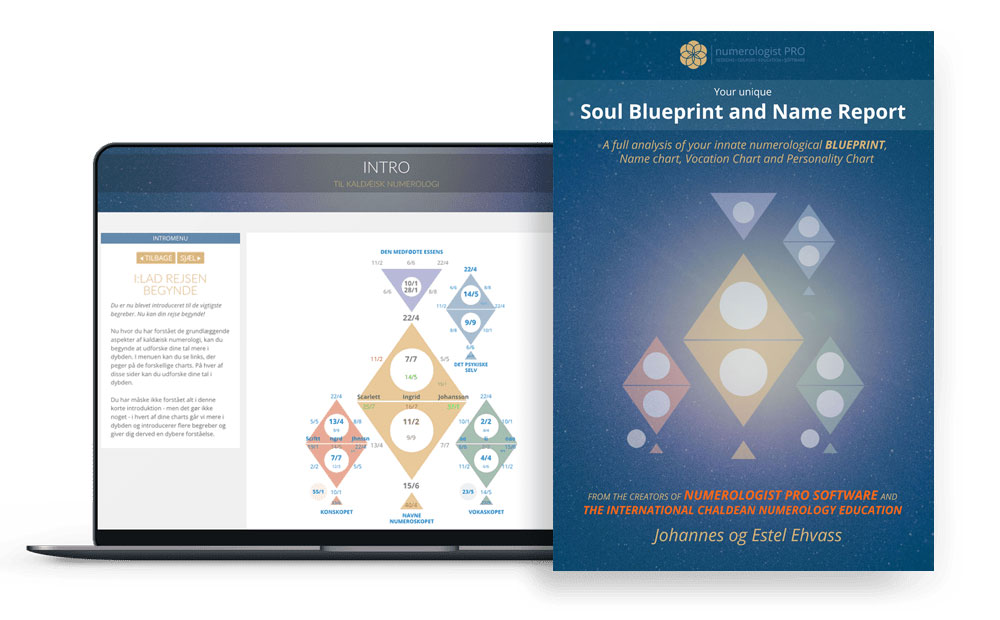Tibetan Astrology

Johannes Ehvass
Welcome, dear reader! My journey into meditation and spiritual exploration has spanned most of my life, taking me through myriad landscapes of the soul and self. Born with a Chinese heritage, and having dedicated over two decades to the practice of yoga, I’ve always been drawn to the traditions that blend various cultural elements into holistic systems of understanding. Enter Tibetan astrology, a realm where the calculated nuances of Jyotish meet the symbolic intricacies of Chinese zodiacs, creating a system of cosmic interpretation unlike any other. My fascination with Tibetan culture and spirituality, enriched by this unique astrological synthesis, is something I deeply cherish. As we delve into this article, I invite you to explore this compelling crossroad of philosophies and traditions, where stars and symbols unite to narrate tales of karma, destiny, and cosmic rhythm.
Tibetan Astrology: A Confluence of Buddhist Cosmology and Celestial Divination
Introduction

Tibetan astrology, a unique blend of Buddhist cosmology, Indian astrology, and Chinese divination systems, serves not just as a predictive tool but also as a guiding principle for spiritual development and growth. While at its core it remains deeply spiritual, its amalgamation with different astrological traditions makes it one of the most intricate systems of divination in the world.
Unlike Western or Vedic astrology, which are primarily based on the movements and positions of celestial bodies, Tibetan astrology is deeply intertwined with Tibetan Buddhism, emphasizing the spiritual journey of an individual and the cycles of birth, death, and rebirth. It also serves as a guide for monks and laypeople alike, offering predictions, remedies, and spiritual guidance based on the alignments of various celestial and elemental forces.
Origin and Development
The rich tapestry of Tibetan astrology finds its roots in various ancient traditions, primarily from India and China. The spread of Buddhism into Tibet during the 7th century brought along with it the Indian system of astrology. As Buddhism became more entrenched in Tibetan culture, so did the astrological practices, evolving and merging with the local bon traditions and Chinese divinatory methods.
The two primary sources that greatly influenced the development of Tibetan astrology are the Kalachakra Tantra from the Indian tradition and the Elemental astrology from the Chinese system. Over the centuries, these two systems intertwined with indigenous Tibetan practices, resulting in a unique and multifaceted astrological system. The infusion of the Kalachakra Tantra emphasized the interconnectedness of the inner (spiritual) and outer (cosmological) worlds, while the Chinese elemental astrology brought in the concepts of the five elements and the twelve-year animal cycle.
Several prominent Tibetan scholars and monks played a pivotal role in shaping Tibetan astrology. For instance, the translations and commentaries of scholars like Vairocana and Dro Lotsawa shaped its early development. Later, during the 17th century, Desi Sangye Gyatso, the regent of the 5th Dalai Lama, further systematized Tibetan astrological practices by composing the ‘Vaidurya dkar po,’ a seminal text on the subject.
The Lunar Calendar and Calculations
Tibetan astrology primarily operates on a lunar calendar system, which is rooted in both Indian and Chinese calendrical practices. A year in the Tibetan lunar calendar comprises twelve lunar months, each beginning with a new moon. However, to reconcile the lunar year with the solar year, an intercalary month is occasionally added, ensuring festivals and significant religious events remain consistent with the solar seasons.
The intricate calculations used in Tibetan astrology are based on the cyclical interactions between the elements and the twelve animal signs, akin to the Chinese zodiac. Each year is associated with a specific element and animal, creating a 60-year cycle. These cycles are crucial for determining an individual’s life force, power, and bodily health for the year. Moreover, each day within the lunar month is also governed by a specific element and animal sign, providing a more granular insight into the daily energies at play.
The five elements in Tibetan astrology are Wood, Fire, Earth, Metal, and Water. Each of these elements has specific characteristics and attributes, and they interact with the twelve animal signs in various ways, determining the nature and quality of the energy for a specific time period. The twelve animals are the Rat, Ox, Tiger, Rabbit, Dragon, Snake, Horse, Sheep, Monkey, Rooster, Dog, and Pig. These animals, much like in the Chinese zodiac, have specific qualities, strengths, and weaknesses that influence an individual’s character, destiny, and life events based on their birth year.
Furthermore, Tibetan astrologers use complex mathematical calculations to determine various aspects of an individual’s life. These calculations are based on three primary astrological systems:
- White Astrology (Kār Tsi): Primarily derived from Indian influences, this system deals with cosmic cycles, planetary movements, and their effects on the individual and the world. It’s largely used for determining auspicious and inauspicious days for rituals, ceremonies, and other significant life events.
- Black Astrology (Nāg Tsi): Rooted in the Chinese elemental system, it’s primarily concerned with life events, individual destiny, health, and the interplay of the five elements. This system often offers remedies and rituals to counteract inauspicious influences.
- Elemental Astrology: As the name suggests, this system focuses on the interactions of the five elements and their influence on the world and individual lives. It’s a more predictive form of astrology, often used to forecast natural events, societal changes, and individual fortunes.
Mewa: The Magic Square
Central to Tibetan astrology is the concept of Mewa or the “Magic Square”. The Mewa is a grid of nine numbers, with each number corresponding to a specific color and direction. This grid is used to determine the energies of the day and how they interact with an individual’s personal energies. The Mewa cycle rotates daily, and its significance lies in its ability to influence an individual’s luck, health, and spiritual well-being.
Each number in the Mewa is associated with a specific set of attributes, deities, and colors. For instance, the number one, also known as the “White Mewa”, is associated with peaceful deities, the color white, and is considered very auspicious. Conversely, the number seven, or the “Red Mewa”, is linked with power, the color red, and can be both favorable and inauspicious depending on its position and interactions with other elements.
Parkha and Lhakhang
Beyond the Mewa, the Parkha and Lhakhang systems delve into the spatial dimensions of Tibetan astrology. The Parkha refers to the eight trigrams (combinations of three broken or unbroken lines) that represent various natural elements and phenomena. These trigrams, similar to the I-Ching of Chinese tradition, provide insights into the energies governing specific directions and spaces. The Lhakhang, on the other hand, pertains to the nine spatial divisions or sectors, providing a more detailed understanding of spatial energies and their interplay with individual and environmental forces.
Both Parkha and Lhakhang are essential for Tibetan geomancy, or ‘Sa Che’, akin to the Chinese Feng Shui. The objective of this practice is to harmonize the individual’s environment with the natural and cosmic forces, ensuring well-being, prosperity, and spiritual growth. This is particularly important when selecting sites for building houses, monasteries, and stupas, or when arranging interiors to promote positive energies and counteract negative influences.
For instance, each Parkha trigram has specific attributes and elements associated with it. The ‘Li’ trigram, symbolized by three unbroken lines, represents fire and is linked to the south. It signifies brightness, clarity, and insight. Conversely, the ‘Kan’ trigram, with a broken line between two unbroken lines, stands for water and is associated with the north. It embodies the qualities of depth, danger, and the unknown. Understanding these spatial energies allows Tibetans to align their living and sacred spaces with cosmic forces, promoting harmony and balance in their lives.
The Life Spirit and the Protective Spirit
In Tibetan astrology, two significant spirits or energies influence an individual’s life: The ‘La’ or Life Spirit, and the ‘Srog’ or Protective Spirit. The health, vitality, and overall well-being of a person depend on the balance and strength of these spirits.
The ‘La’ is the essential life force, residing in the heart. It ensures physical vitality, mental strength, and emotional stability. Various factors, such as negative astrological influences, illnesses, traumas, or offending local spirits, can weaken the ‘La’. Rituals, amulets, and specific practices are often prescribed by Tibetan astrologers to strengthen and restore this vital energy.
The ‘Srog’, on the other hand, is a protective energy that shields the individual from external negative influences, much like a guardian spirit. It is believed to reside in the top of the head and ensures a long and protected life. Keeping the ‘Srog’ strong is crucial for warding off illnesses, accidents, and untimely death. Specific rituals, offerings, and protective amulets play a significant role in maintaining the potency of the ‘Srog’.
The Annual Predictive Charts
Every year, Tibetan astrologers prepare annual charts that offer predictions for the forthcoming year. These charts, based on intricate calculations involving the interplay of elements, animal signs, Mewa, Parkha, and various other factors, provide detailed insights into the coming year’s energies, opportunities, challenges, and significant events. The charts are not just for individuals but also for communities, regions, and the entire Tibetan society.
These annual predictions often serve as guides for monastic activities, agricultural tasks, and major life events. For instance, the charts might indicate auspicious months for planting crops, favorable days for monastic initiations, or potentially challenging periods where extra precautions might be needed. The annual charts are a testament to the living tradition of Tibetan astrology, where cosmic forces and human endeavors are seen as deeply intertwined, influencing and shaping each other in an eternal dance of cause and effect.
In conclusion, Tibetan astrology, with its rich tapestry of influences, serves as a beacon guiding the spiritual and material lives of the Tibetan people. Rooted in ancient wisdom, yet alive with contemporary practices, it continues to inspire, guide, and enlighten, emphasizing the interconnectedness of all existence.
Rites and Remedies
Given the profound connection between the cosmos and human existence in Tibetan astrology, the outcomes of astrological readings often involve prescribed rites and remedies. These are designed to counteract negative influences, enhance positive energies, and maintain harmony with both the outer and inner worlds.
For example, if an individual’s astrological chart indicates an impending period of health vulnerability, an astrologer might prescribe specific prayers, rituals, or even recommend wearing certain amulets. These amulets, often containing mantras or sacred symbols, act as protective shields against negative forces.
Rituals may also involve offerings to appease local deities or spirits. Given Tibet’s rich pantheon of deities and spirits, these offerings are tailored to the specific entities associated with the astrological readings. For particularly inauspicious forecasts, larger scale rites, such as fire ceremonies or community prayers, might be organized.
Moreover, the use of sacred Tibetan medicinal herbs, administered in line with astrological insights, is also common. These herbs, possessing both spiritual and medicinal qualities, help in realigning an individual’s energies and restoring balance.
The Role of Astrologers
The Tibetan astrologer, known as ‘Tsi-pa’ in the local language, is not merely an interpreter of celestial signs but is seen as a spiritual guide. Their role is multifaceted, encompassing that of a healer, counselor, and spiritual advisor. Given the intricate blend of Buddhism, cosmology, and elemental understanding required in Tibetan astrology, becoming a Tsi-pa requires rigorous training, often under the tutelage of experienced masters in monastic settings.
Aside from their astrological expertise, Tsi-pas are also well-versed in Tibetan Buddhism’s philosophical and spiritual aspects. This knowledge enables them to contextualize their astrological insights within the broader framework of an individual’s spiritual journey, karmic history, and life purpose.
The trust and respect accorded to Tsi-pas are immense. Their readings and advice influence various spheres of Tibetan life, from personal decisions like marriages and career choices to community and monastic matters, including the identification of reincarnated Lamas or the timing of significant religious events.
Conclusion: Tibetan Astrology as a Living Tradition
While the origins of Tibetan astrology can be traced back over a millennium, it remains a vibrant and dynamic tradition, deeply embedded in the daily lives and spiritual practices of the Tibetan people. Far from being a static or archaic system, it continually evolves, assimilating new insights and adapting to changing circumstances.
The strength of Tibetan astrology lies in its holistic approach, viewing individuals not as isolated entities but as part of a vast cosmic dance. By understanding the rhythms of this dance, one can harmonize with the universe, navigate life’s challenges, and journey towards spiritual enlightenment. In an ever-changing world, Tibetan astrology offers timeless wisdom, reminding us of the interconnectedness of all things and guiding us towards a life of balance, purpose, and understanding.

Johannes & Estel: Renowned authorities in Numerology, Astrology, and the esoteric arts. As the founders of Scandinavia's premier Numerology school, we're delighted to share our insights through this curated series on astrology. Dive in and discover the stars.
The Worlds Most Advanced Numerology Report

Your birthdate reveals your unique life purpose, potentials, talents, weaknesses, and karma in this life.
Your names show what you attract into your life regarding your career, relationships, happiness, money, and success.
GET THE REPORT HERE
Introduction to Astrology
The history of Astrology
Moving beyond deterministic astrology
Foundation of Astrology: Planets, Signs and Houses
Astrology and the Holographic Universe
The Holographic Universe
The Human Psyche as a Mirror to The Solar System
The Human Body as a Mirror to The Star Signs
Astrology Background
Egyptian Astrology
Mayan Astrology
Chinese Astrology
Indian Astrology - Jyotish
Celtic Astrology
Tibetan Astrology
Mesopotamian Astrology
Early Mesopotamian Astrology: The Dawn of Celestial Divination
Enuma Anu Enlil: The Epicenter of Babylonian Celestial Omen Interpretation
Babylonian and Chaldean Astrology
Babylonian and Chaldean Astrology
Chaldean influence and evolution
Chaldean Wisdom: Safeguarding and Transmitting Astrological Knowledge
Hellenistic Astrology
Hellenistic Astrology background
Claudius Ptolemy and Tetrabiblos
Vettius Valens
Dorotheus of Sidon
Persian Astrology
Persian Astrology background
Sassanian Astrology
Late Antiquity and The Transition Period
Late Antiquity and The Transition Period
Hellenistic to Islamic Transition: The Torchbearers of Astrological Wisdom
Islamic Golden Age
Arabian Astrology Background
Arabian Astrology Contributions
Medieval Astrology
Introduction: The Medieval Cosmos
Monastic Preservers: Astrological Knowledge in the Dark Ages
Astrology in Medieval Medicine
Kings, Queens, and Constellations: Astrology in the Medieval Court
The Church and the Stars: A Contentious Relationship
Universities and Scholastic Pursuits: Academic Astrology
Astronomy & Astrology: Tools of the Trade
Medieval Astrological Houses and the Synthesis of Traditions
Transition to the Renaissance: Humanism and the Celestial Arts
Reflections: Medieval Astrology's Echoes in Modern Practice
Astrological Art of the Middle Ages
Famous Medieval Astrologers
Medieval Astrological Texts
Renaissance Astrology
Renaissance Humanism and Astrology
Scientific Advancements and Astrology
The Social Fabric: Astrology in Everyday Renaissance Life
Court Astrologers of the Renaissance
Controversies and Conflicts: Astrology Under Scrutiny
Renaissance Texts and Authors: Continuation of a Tradition
Astrology and Art: Celestial Imagery in the Renaissance
Renaissance Astrological Practices: Evolutions and Innovations
End of the Renaissance: The Gradual Decline of Astrological Influence
Renaissance Astrology's Echo in the Modern World
Enlightenment Astrology
Introduction: The Enlightenment and Astrology
Challenging the Stars: Astrology's Critics during the Enlightenment
Astrology and the New World
Astrology in the 19th Century
The Dawn of Psychological Astrology
Astrology in the 20th Century: A Modern Renaissance
Astrological Associations and Schools
Modern Controversies and Astrology
Astrology and Popular Culture
Astrology and Technology
Current Trends and Future Directions in Astrology
Conclusion: Reflecting on Astrology's Evolution
The Planet Significances
The Sun in Astrology
The Moon in Astrology
Mercury in Astrology
Venus in Astrology
Mars in Astrology
Jupiter in Astrology
Saturn in Astrology
Uranus in Astrology
Neptune in Astrology
Pluto in Astrology
Chiron in Astrology
Black Moon Lilith in Astrology
Pars Fortuna in Astrology
Ceres in Astrology
Houses in Astrology
Introduction to Astrological Houses
The Angular Houses
The Succedent Houses
The Cadent Houses
The 1st House
The 2nd House
The 3rd House
The 4th House
The 5th House
The 6th House
The 7th House
The 8th House
The 9th House
The 10th House
The 11th House
The 12th House
Interaction Between Houses
Derived Houses, House Rulers, and Interceptions
Conclusion: Synthesizing House Knowledge
All Materials © 2023 & 2024 Numerologist PRO
Terms of Service: Information provided by Numerologist PRO and/or from this web site is not intended as advice (medical, psychological, financial or other), nor is it intended to replace your work with a qualified professional (medical or otherwise). You should maintain your relationship with your providers and consider the services of this site as informational only. Any information, stories, examples, or testimonials presented on this website do not constitute a warranty, guarantee, or prediction regarding the outcome of an individual. This web site is a sharing of knowledge and information of numerology/energy work based on the experiences of Numerologist PRO. You are encouraged to make your own decisions based on your own research and inner guidance. By booking and receiving services, you agree to fully release and hold harmless Numerologist PRO and all it's affiliated numerologists from and against any liability or claim that may arise out of or in connection with their service(s).
Numerologist PRO © 2021

CONTACT
numerologist@numerologistpro.com
LIKE US, and get free numerology tools, info about your personal numbers, best business dates of the year - and more!
YOUR FREE NUMEROSCOPE CHART
Enter your name and email below and get access to our free online numerology chart tool.